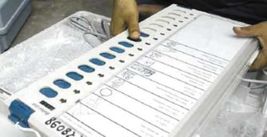Gurvinder Singh
Tribune News Service
Ludhiana, April 26
In a step that will help save lakhs of litres of water literally going down the drain, the Punjab Pollution Control Board (PPCB) has recommended that male urinals must be installed not only in commercial buildings, but in homes too.
Not just male urinals, the dual flush system should also be mandatory to reduce the amount of potable water usage.
According to information, 12 litres of water gets flushed down from a typical old single cistern in washrooms.
“An average, a person ends up wasting 48 litres of water if he uses washroom four times a day for urination. If a male urinal system in installed in the same washroom, he will use less than a litre of water. It will save around 47 litres of water per family on daily basis,” said KS Pannu, the PPCB Chairman.
Not just male urinals, but old single flush systems need to be replaced with the dual flush systems. Old single flush system use upto 12 litres of water per flush whereas the dual flush toilets use around 3 litres of water for half flush and 6 to 8 litres of water for full flush.
The dual flush systems handle solid and liquid toilet waste differently and help in conservation of water, according to a study conducted by the PPCB.
In letters sent to the government, as well as the Department of Housing and Urban Development as well as Municipal Corporation, Local Government it has been mentioned that installation of male urinals in residential units should be included in the statutory conditions of building by-laws for saving potable water.
“It is ironical that 12 litres of water is flushed for male urinals when just around 50 ml is enough. It points towards indiscriminate use of water for various purposes and puts pressure on the supply systems, besides leading to excessive discharge into the sewerage, which in turn adversely impacts the effluent treatment facilities,” said Pannu.
“It then requires more capital for effluent treatment facilities, which makes disposal of waste non-viable,” he added.


























